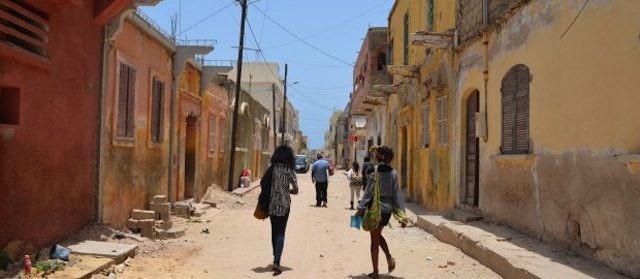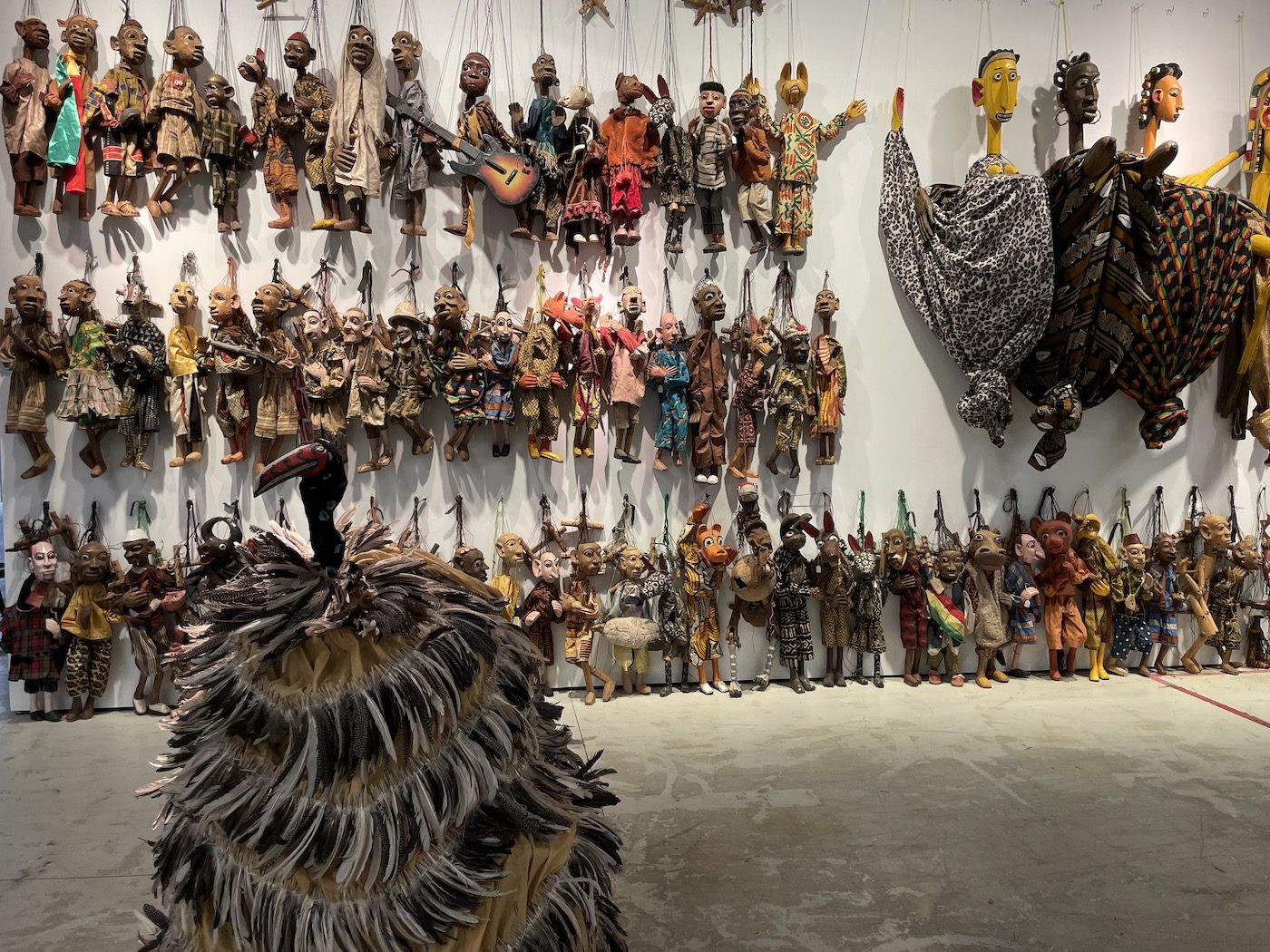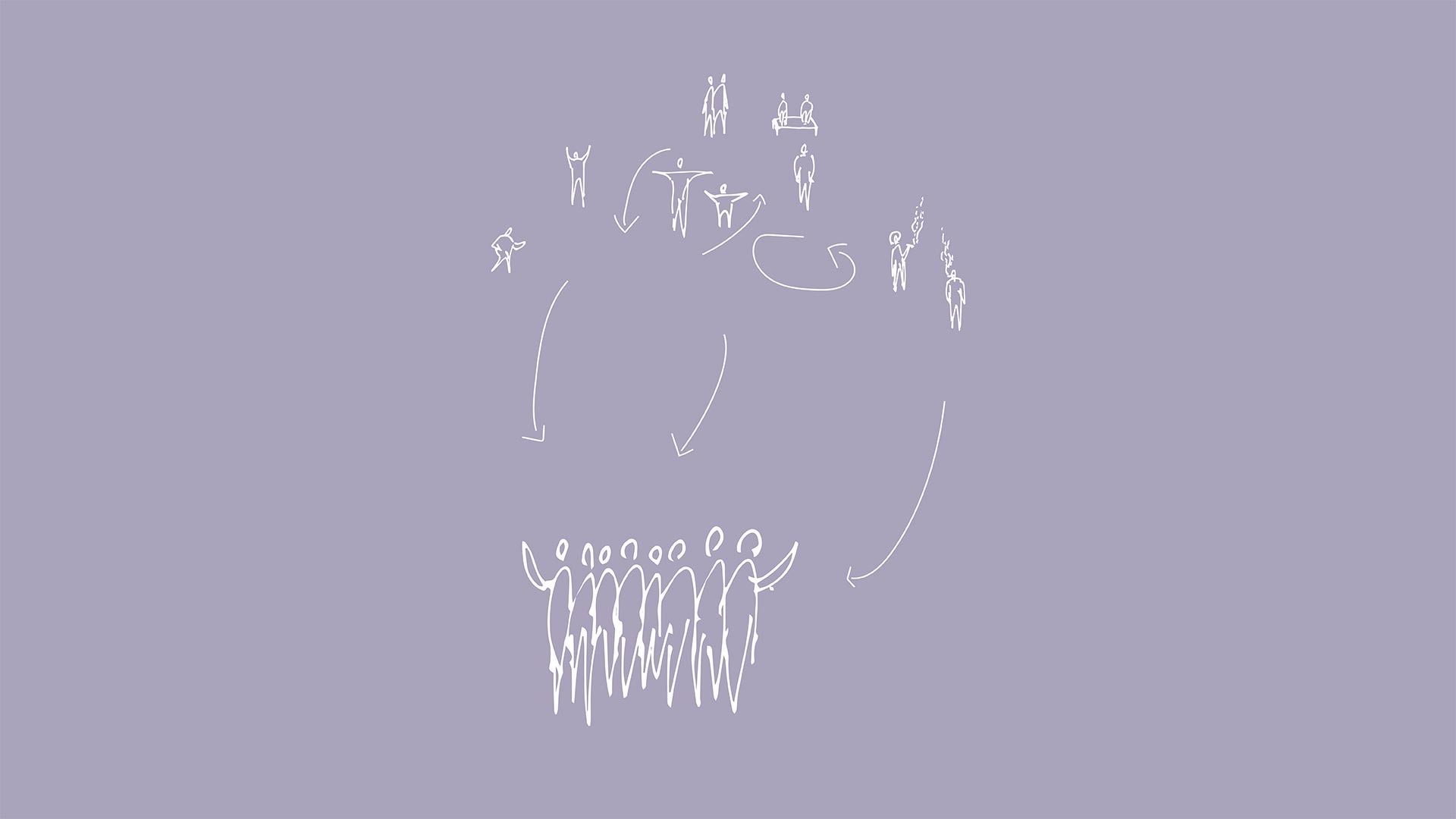Dear Dakar: "History of place, history of art"

26 September 2014
Magazine C& Magazine
11 min read
Kwasi Ohene-Ayeh: At Professor Moyo Okedeji’s talk “Unlearning, Dismembering and Re-Membering” [1], Moyo spoke on salient issues that hit me directly, like language. Moyo said at some point that he had “no language” to express his ideas because of the system of education which had trained him through to the Master’s level. There was a …
Kwasi Ohene-Ayeh: At Professor Moyo Okedeji’s talk “Unlearning, Dismembering and Re-Membering” [1], Moyo spoke on salient issues that hit me directly, like language. Moyo said at some point that he had “no language” to express his ideas because of the system of education which had trained him through to the Master’s level. There was a split between his cultural experience, his physical environment, and the material from which he produced paintings: they had no relation. He needed a vocabulary that was true to him with no conflict for the purpose of expressing his ideas. Jamaica Kincaid in A Small Place writes about a similar constriction when she states “…and worse and most painful of all, no tongue. (For isn’t it odd that the only language I have in which to speak of this crime is the language of the criminal who committed the crime?)” [2] Likewise, Ng?g? wa Thiong’o abandoned the English language in the late ’70s and begun writing in his mother tongue [3]. These are examples, in my mind, that share a longing for originality after being robbed of the essence. An essence through which they communicate or express their ideas, thoughts, and feelings. This is scary. The awareness of such a condition must make it all the more frightening for whoever is experiencing it.
Moses Serubiri: Oh, I remember that. That was frightening, indeed. However, I think it was Moyo who quoted Le Devoir de Violence by Yambo Ouloguem [4]. It led to Igo Diarra talking about Ouloguem, and then Bisi Silva talked about the Chimurenga feature on Ouloguem [5]. “Hmm!” I thought. That feature, “In Search of Ouologem,” was so familiar and yet the story was so historic and complex, you know? I’m now reading – and thankful to have met the author of – a historical fiction novel, Kintu [6], set in Uganda beginning in 1750. So for me, Moyo’s talk not only relates to the essence through which one communicates but also reminds me of other writers and historians within African literature who speak of the problems of history and who seek to provide thoughtful evaluations and meditations on history through literature, as Ouloguem did for the complex colonial history of Northern Mali in Violence. In terms of visual language, Moyo’s need for a language that was true to him is for me related to the very dumbfounding question of “What is African art?” Perhaps even going as far as “Who named it African art?” and “What was the aesthetic criteria for defining African art?” During the scheduled crit with Moyo, we spoke about how to interpret African aesthetics in the everyday movement of life and objects of our environment. This session with Moyo in many ways was a divorce from established anthropological definitions of African art and even some contemporary ones. In his talk, Moyo showed a slide of the primary school from which terrorists abducted the 200 girls in Northern Nigeria. He analyzed the absences and presences in the signposts: how the word “girls’” had been erased with paint. He challenged us to connect an aesthetic understanding of art to the act of erasing words on the signpost as a precaution against terrorist attacks. For him, African art could be visible within contemporary politics. Just to look at a window display and to think of how that particular window display describes an African aesthetic was really powerful. In fact, almost in response, I’m working on an essay and photo documentary series that deals with modes and aesthetics of displaying meat, in the hope of describing a kind of current social or psychological pattern of behavior. I’m also taking a leaf from Roland Barthes’ essay on press photography [7], which speaks of the photographic complex of representing the agendas of media houses and simultaneously captures the thoughts of everyday people.
KO: I think of our last project as belonging to a collective memory. The title leads in that direction. For me, Dear Dakar not only references a city but a collective – the Àsìkò 2014 collective (as I call it). Listening to the sound recording for the project always evokes a deep sense of nostalgia. Recollecting a Dakar through other (familiar) voices is always an emotional journey for me. What are your own memories of the project, the Piscine Olympique Nationale, and Dakar itself?
MS: I would like to distinguish between this collective or shared production of memory and the private recalling of memory. Regarding private memories, they were not about Dakar at all. What do I know about Dakar? And how can one possibly remember a place that one doesn’t know much at all? What I have are simply fragments that anyone can put into context. The memories that I had were actually reflections on my life, and more so, my artistic life. So it is not so much that they were memories than that they were visions of some kind. The memories of our project and the Piscine are extremely complex. They are not entirely “unpacked” and they stay in that blur… But yes, I’m appreciative of the time to enter that deeply into the details of oneself and one’s identity, as in Dakar.
KO: What I mostly remember from the Dear Dakar project are the creative processes – brainstorming, concept development, casual conversations – as well as the unexpected happenings, anxious and tense moments which threatened to jeopardize the exhibition. Those were the most meaningful moments for me. Twelve minds coming together to create one collective work would always produce tensions but we managed them well. There were moments when I felt like the exhibition day would arrive and there would be no physical work to show. My memories of the project are of the processes and how they aided or forced me to relate with, listen to, and work with the other members of the group. I was fascinated about sound as the primary medium because it has a transcendent nature. Perceived through the ears, it inhabits the body, consumes its being, and engages all other senses from there. Perhaps the coagulation of literature, memory, and language preserved in Dear Dakar opens a more transcendent door yet to be discovered. Think about it: when we cut up the fabric which decorated the tables that we had used throughout the 5-week stay at the Piscine and shared it amongst ourselves (and others who we thought had been a significant part of our experience), we literally introduced a geographical dimension to the project. Each of us now owns and travels with a fragment of a collective nostalgia because we agreed to invest meaning into this material.
MS: The collective action of cutting the physical material and the transcendence of the sound recording which is now available online: do these preserve collective memory? And is there more meaning beyond this preservation? The Oxford English Dictionary defines collective memory as a mass noun, the memory of a group of people passed from one generation to the next. Perhaps, this project Dear Dakar also engages history. I recall thinking about the historical frameworks in conversation with Igo Diarra. Perhaps there is something about rewriting history in Dear Dakar. Perhaps in this action of transcribing or recording a collective memory, the group efficiently constructed their own history of Dakar. Perhaps the sound recording Dear Dakar can also pass as a form of oral history. Perhaps I can call this the mythologizing of our Dakar experience a mixing of the history of place and the history of art. What is necessary to challenge this kind of short and emotionally driven history making? How can we challenge the myth of Dear Dakar?
“Memory is life… It remains in permanent evolution. History, on the other hand, is the reconstruction, always problematic and incomplete, of what is no longer.”[8]
I wonder if our emphasis should be on history-making rather than memory-making. When I hear the voices on the sound project of Dear Dakar, I perceive it as a mythologizing, as a myth and history making of the Dakar experience. But what would it mean to reduce the permanence of history making to the refreshing memory bit of it? What would it mean to go beyond history making or rather rewriting or revisiting history, to enter into more complex and intricate ways of producing memories or experiences of memory?
KO: The physical action of cutting up fabric and the sound recording define a common event belonging to our collective memory. Erin’s “The Pattern of Memory” [9] opens the conversation further to include “the role of the image in the making of collective memory.” She reads a double meaning into the patterns in the fabric as both a reminder of a specific set of events and place as well as the abstract process in the mind of remembering and forgetting which determines what or who is included in historic narratives. Also the recording becomes objectified as a “product” so we can play back any time we want to re-live our shared moments in Dakar. Kitso Lelliott’s and Dana Whabira’s narratives on the sound recording deal with expectations, stereotypes, imagination, and magic (fantasy) intricately. I will agree that the trilingual sound recording is a myth-making exercise as much as it is a recollection of a “true” experience of Dakar. Perhaps the recording is itself a geography, theorized by Irit Rogoff as writing “relations between subjects and places” [10]<!-- Citation missing. --> through themes of mapping, luggage, borders, and bodies. The project conceptually explores landscapes of memory, language, history, and myth in time and of place – be it subjective or collective. On “mixing the history of place and the history of art,” as you have stated, I think the “return” to Dakar entails many prospect and possibilities with Dear Dakar as the starting point – a retrospective, symbolic project juxtaposing individual narratives into a collective “letter.” I think that an existential study of Dakar would be the most meaningful way to engage the city and its art-infested environs. By being present within it and dealing with its contemporary history – the people, buildings, landscapes – we would learn more about Dakar (and inevitably about its past). It takes me back to your conversation with Moyo about interpreting aesthetics unique to our own cultural conditions through our works. How does Dear Dakar as a project, charting its own history or rewriting existing histories, shape your thoughts on our future encounter with the city?
MS: First, I must think more about the history of Dear Dakar. An emotionally charged, poetic, and distant, yet present, approach to history has its own immediacy. I always think about this when I listen to the project. It is such an immediate effect. And yet, as a history of the place Dakar, it doesn’t always take me back to Point E in Ouakam. Perhaps, listening to a mbalax song by Youssou N’dour might do this with more immediacy. Or looking through the book Chronicle of a Revolt by Koyo Kouoh might make a faster connection in terms of memory, history, and place. In this way, I think there is much greater challenge to engage not only our own memory of Dakar, but also the memory of the place by those who have lived there.
Kwasi Ohene-Ayeh lives and works in Ghana. Using installation, performance, site-specific, and socially engaged projects, Ohene-Ayeh explores ambiguities in Accra’s urban contemporary sign systems and social identity.Serubiri Moses is a writer, photographer, and curator. His research interests include urbanity, language, politics, and aesthetics. His essays focus on metaphors for postcolonial Ugandan politics and urban experience.
Notes:
1. Okediji, Moyo. “Unlearning, Dismembering and Re-membering.” Presented during the Asiko Art School in May 2014, Dakar, Senegal.
2. Kincaid, Jamaica. A Small Place. New York: Farrar, Straus, Giroux, 1988. Print.
3. Cohen-Cruz, Jan. Radical Street Performance: An International Anthology. London: Routledge, 1998. Print. (Chapter 29)
4. Ouologuem, Yambo. Bound to Violence. Revised/Expanded ed. New York: Harcourt Brace Jovanovich, 1971. Print.
5. Wise, Christopher. “In Search of Yambo.” Chimurenga Chronic. http://chimurengachronic.co.za/in-search-of-yambo/
6. Nansubuga Makumbi, Jennifer. Kintu. Kwani?, 2014. Print.
7. Barthes, Roland. “The Photographic Message.”
8. Neo Gedi and Yigal Elam. “Collective Memory – What is it?” History and Memory. Vol. 8, No. 1. 1996
9. Erin Rice, “The Pattern of Memory.” http://www.asikoartschool.org/the-pattern-of-memory/
10. Rogoff, Irit. Terra Infirma: Geography’s Visual Culture. London: Routledge, 2000. Print.
Read more from

Maktaba Room: Annotations on Art, Design, and Diasporic Knowledge

Irmandade Vilanismo: Bringing Poetry of the Periphery into the Bienal
Read more from



